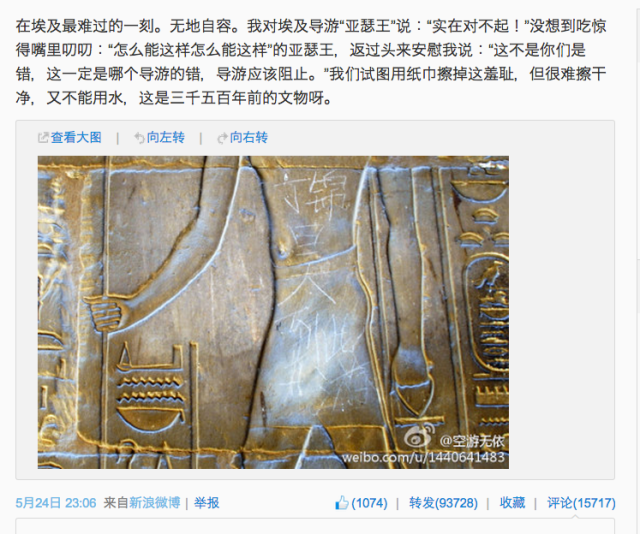Global tourism is putting increasing pressure on historical sites and monuments, as growing numbers of tourists visit major cultural tourist locations around the world.
High standards of living, lengthy vacations, and relatively affordable flights have allowed many Western Europeans, Canadians, Americans, and Australians to participate in global tourism since the 1950s. Mass tourism now involves large groups that are transported locally by cruise ships and buses and that can overwhelm port cities, small towns, and remote villages that have cultural sites. Latin Americans, Eastern Europeans, and Russians have become mass tourism customers since the 1990s. Increasing numbers of Indians and Chinese are now joining the expanding wave of global tourism.
Graffiti is now one of the biggest problems associated with mass tourism. An incident of graffiti vandalism by a Chinese teenager at Luxor, Egypt, has apparently led to a debate about graffiti and tourism in China.
Le Monde reports on the debate in China.
Tourist graffiti has a long history, however. The early modern form of mass tourism, the noble grand tour, sometimes involved leaving graffiti on monuments visited. I have personally seen eighteenth-century graffiti at monuments in southern France and Italy.
On graffiti and tourism, see: Andrea Mubi Brighenti, ed., The Wall and the City/Il muro e la città/Le mur et la ville (2009).
Graffiti and mass tourism are major concerns in European and Mediterranean nations with historical sites that are popular tourist destinations.

